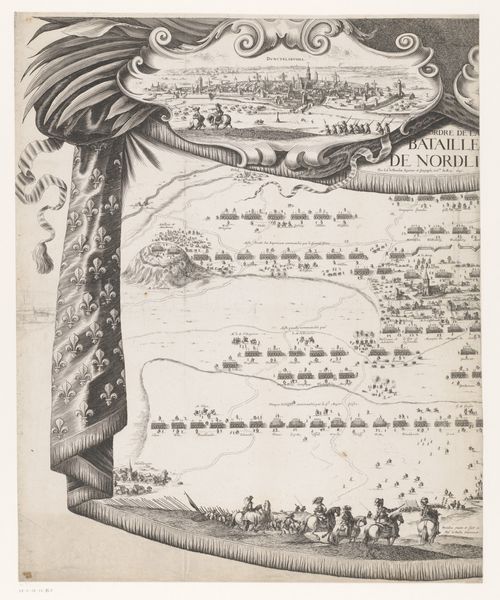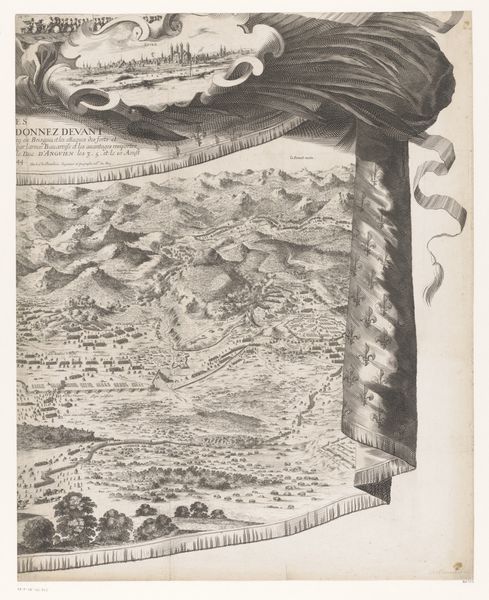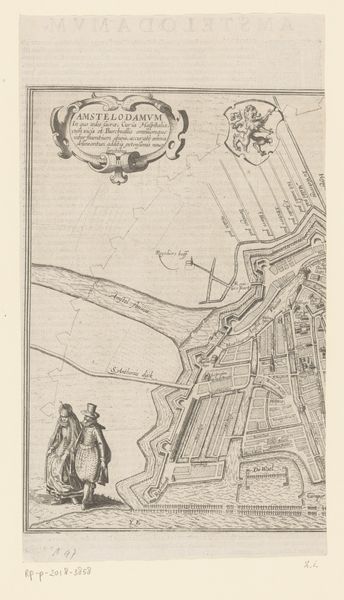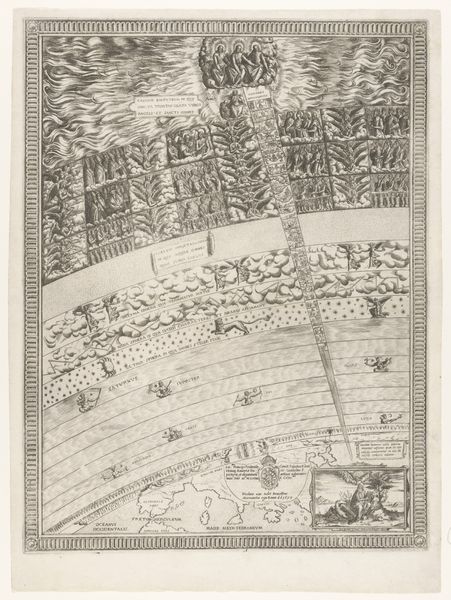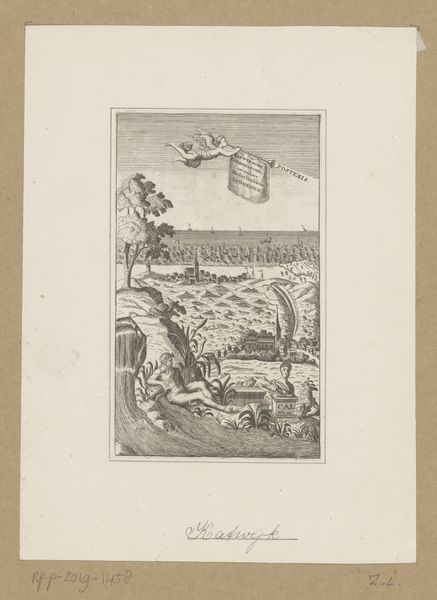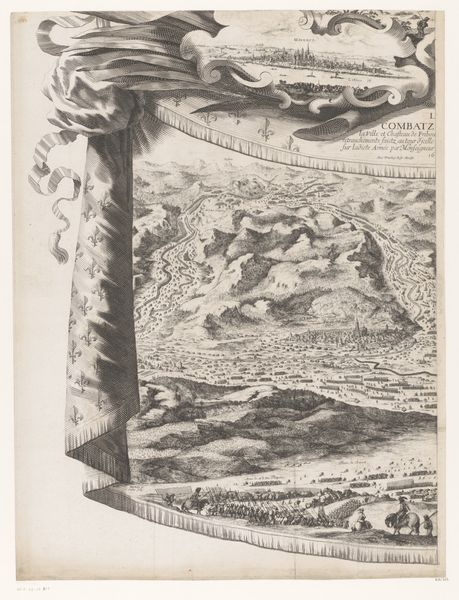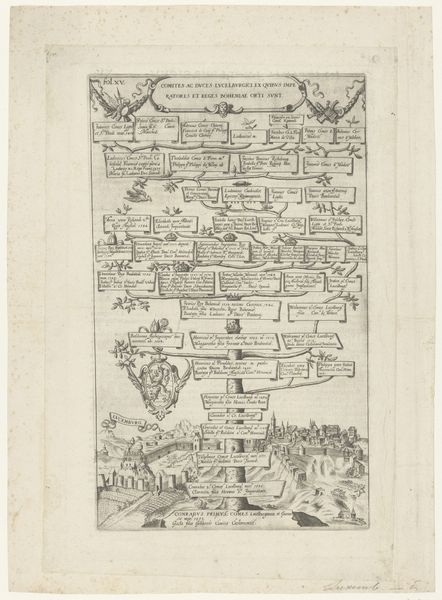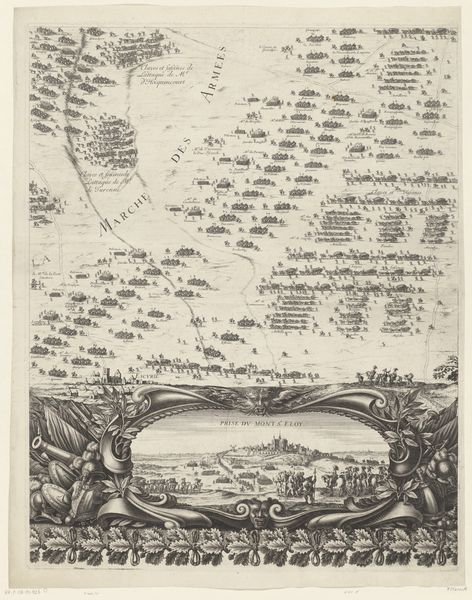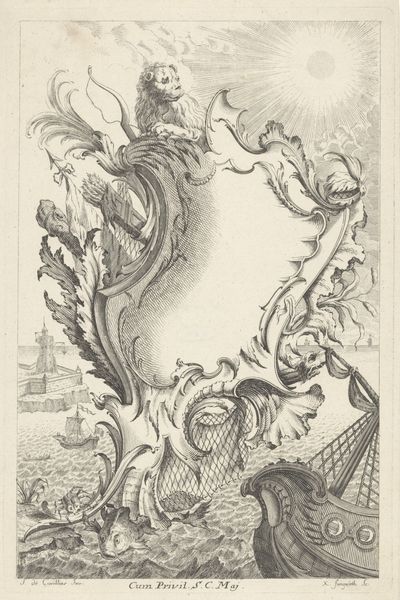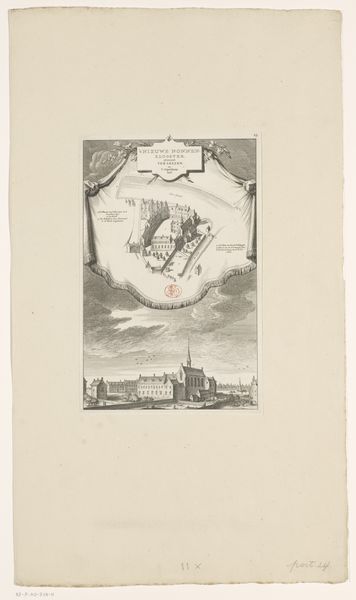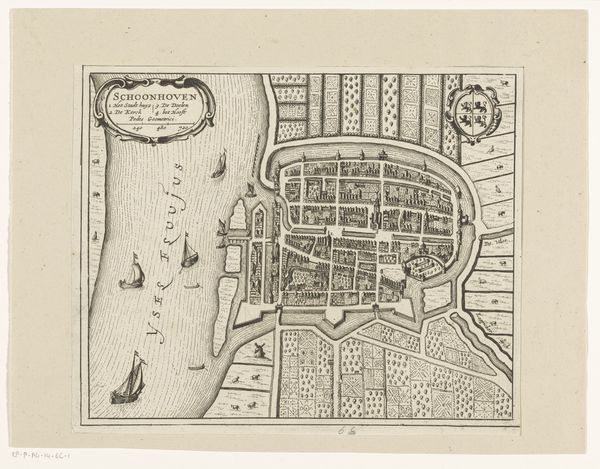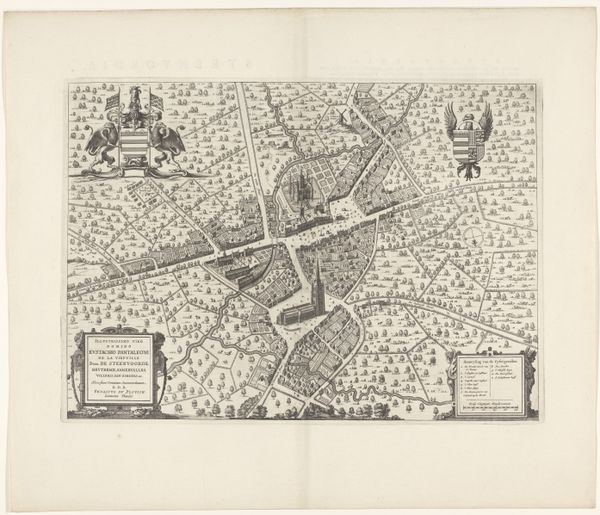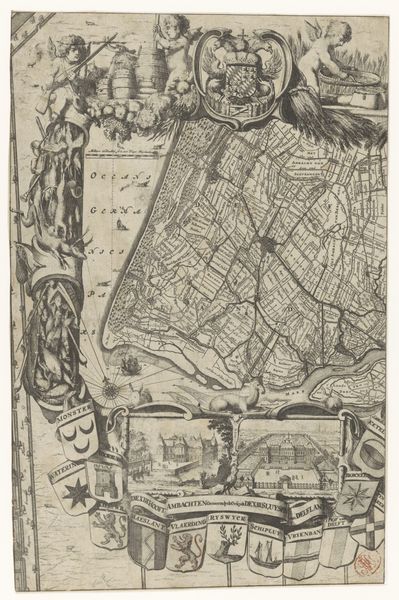
Opstelling van het leger bij slag bij Nördlingen (rechterdeel) 1646 - 1686
0:00
0:00
nicolascochin
Rijksmuseum
print, engraving
#
pen drawing
# print
#
pen illustration
#
pen sketch
#
old engraving style
#
personal sketchbook
#
ink drawing experimentation
#
pen-ink sketch
#
pen work
#
sketchbook drawing
#
cityscape
#
history-painting
#
sketchbook art
#
engraving
Dimensions: height 575 mm, width 431 mm
Copyright: Rijks Museum: Open Domain
Editor: This print, "Opstelling van het leger bij slag bij Nördlingen," made sometime between 1646 and 1686, presents a detailed view of a cityscape and military arrangement. It strikes me as a carefully constructed depiction of power and order. What do you see in this piece? Curator: I am immediately drawn to the symbolism embedded within. The fleur-de-lis, prominently displayed on what appears to be a draped curtain, instantly evokes French royalty and authority. Considering the context of the Thirty Years' War, during which the battle of Nördlingen took place, these symbols aren't just decorative, they signify political allegiances and the projection of power. Notice how the detailed cityscape sits above the regimented depiction of military encampments, suggesting perhaps the protection – or the subjugation – of the city by the forces below. Editor: So, you're suggesting the imagery operates on multiple levels, communicating more than just the battle's layout? Curator: Precisely! Think of how maps, especially those depicting military campaigns, are never truly objective. They're imbued with the values and perspectives of those who commission them. The visual language speaks volumes, doesn't it? How do you think the choice to include a cityscape alters our perception of the conflict? Editor: It makes it feel more real, more about people and places, and less abstract. It's like saying, "This isn't just about armies clashing; it's about what they are fighting for and the society that will be affected." I didn't see that at first. Curator: Indeed. Images are powerful conveyors of memory and cultural continuity. The symbols, the composition - they tell a story, not just of a battle, but of an era's power dynamics and values. Editor: I never would have considered how much these details contribute to the historical narrative. I'll definitely be looking at maps and prints differently from now on!
Comments
No comments
Be the first to comment and join the conversation on the ultimate creative platform.
